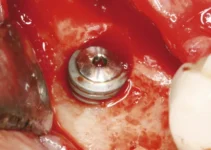Medical science has made significant strides in addressing low ovarian reserve through innovative treatments. Platelet-rich plasma (PRP), dehydroepiandrosterone (DHEA), and other cutting-edge therapies offer new hope for women struggling with diminished ovarian function. These advanced treatments work by potentially improving egg quality, stimulating follicle development, and enhancing overall reproductive potential. While research continues to evolve, these emerging options represent promising alternatives for patients seeking to improve their fertility outcomes.
Understanding Low Ovarian Reserve
Low ovarian reserve refers to a condition where the ovaries lose their reproductive potential, characterized by a reduced quantity and quality of oocytes. This natural process typically accelerates with age but can also occur prematurely in some women. The condition significantly impacts fertility potential and represents one of the most challenging issues in reproductive medicine.
The primary causes of diminished ovarian reserve include:
- Advanced maternal age (most common factor)
- Genetic predisposition
- Autoimmune disorders
- Previous ovarian surgery
- Chemotherapy or radiation exposure
- Environmental toxins
Research indicates that women with low ovarian reserve experience a significant reduction in both egg quantity and quality, which directly affects their chances of natural conception and success with assisted reproductive technologies. The condition affects approximately 10-30% of women seeking fertility treatment worldwide.
Diagnosis and Testing
Diagnosing low ovarian reserve involves a comprehensive evaluation using multiple diagnostic tools. The most reliable approach combines various testing methods to provide an accurate assessment of a woman’s reproductive potential. Modern diagnostic protocols typically include:
- Anti-Müllerian Hormone (AMH) testing – considered the most reliable biomarker
- Antral Follicle Count (AFC) via transvaginal ultrasound
- Day 3 Follicle Stimulating Hormone (FSH) and estradiol levels
- Inhibin B measurements
Recent advances in diagnostic technology have improved our ability to detect diminished ovarian reserve earlier, allowing for more timely interventions and better treatment planning. Studies show that combining multiple markers provides a sensitivity of up to 89% in detecting low ovarian reserve.
Interpreting Test Results
Understanding test results requires careful consideration of multiple factors. AMH levels below 1.0 ng/mL generally indicate reduced ovarian reserve, while levels below 0.5 ng/mL suggest significantly diminished reserve. However, these values should always be interpreted in context with other markers and the patient’s age.
Key reference ranges to consider:
- AMH levels: Optimal (>2.0 ng/mL), Fair (1.0-2.0 ng/mL), Low (<1.0 ng/mL)
- AFC: Normal (>10 follicles), Borderline (7-10 follicles), Low (<7 follicles)
- Day 3 FSH: Normal (<10 mIU/mL), Elevated (>10 mIU/mL), High (>15 mIU/mL)
Research has shown that these markers, when evaluated together, provide the most accurate assessment of ovarian reserve and potential response to fertility treatments. It’s important to note that results should be interpreted by fertility specialists who can consider all relevant clinical factors.
If you found this information helpful, we encourage you to explore our related articles on fertility treatments, including innovative therapies like PRGF-Endoret® and other advanced reproductive technologies that are showing promising results in improving fertility outcomes.
PRP Treatment for Low Ovarian Reserve
Platelet-Rich Plasma (PRP) therapy represents a groundbreaking approach in reproductive medicine for treating low ovarian reserve. This innovative treatment harnesses the body’s natural healing mechanisms through concentrated growth factors and proteins derived from the patient’s own blood. The fundamental principle behind PRP lies in its rich concentration of growth factors, including PDGF, TGF-β, and VEGF, which play crucial roles in tissue regeneration and cellular repair.
The scientific mechanism of PRP in ovarian rejuvenation involves the activation of stem cells and promotion of angiogenesis within the ovarian tissue. Studies have shown that PRP can stimulate the development of new follicles and improve blood flow to the ovaries, potentially leading to enhanced ovarian function and increased egg quality. The treatment works by creating an optimal microenvironment that supports follicular development and hormone production.
Recent advancements in PRP preparation techniques, such as the PRGF-Endoret® system, have demonstrated remarkable results in reproductive medicine. This system specifically helps in tissue conditioning and can increase tissue regeneration by up to 33%, making it particularly effective for patients with diminished ovarian reserve.
PRP Procedure and Benefits
The PRP procedure follows a carefully structured protocol designed to maximize its therapeutic potential. The process begins with:
- Blood collection from the patient
- Centrifugation to separate platelet-rich plasma
- Activation of platelets to release growth factors
- Precise administration into the ovarian tissue
The benefits of PRP therapy are particularly noteworthy in reproductive medicine. Patients typically experience improved follicular development and enhanced ovarian function. The treatment has shown promising results in:
- Increasing endometrial thickness
- Enhancing blood flow to reproductive tissues
- Reducing fibrosis and promoting tissue healing
- Improving hormone production
Research and Success Rates
Clinical studies have demonstrated encouraging results for PRP therapy in treating low ovarian reserve. Research indicates that patients receiving PRP treatment show significant improvements in AMH levels and antral follicle counts. The PRGF-Endoret® system, in particular, has shown the ability to increase endometrial thickness by up to 33%, significantly improving the chances of successful embryo implantation.
Success rates vary depending on individual factors, but studies report that approximately 50-60% of patients show improved ovarian function markers after PRP treatment. The therapy has proven particularly effective when combined with other fertility treatments, demonstrating enhanced outcomes in IVF cycles and natural conception attempts.
If you found this information about PRP therapy valuable, we encourage you to explore our related articles on innovative fertility treatments, hormone optimization, and advanced reproductive technologies. Understanding all available options is crucial for making informed decisions about your fertility journey.
DHEA Supplementation
DHEA (Dehydroepiandrosterone) supplementation has emerged as a promising treatment for women with diminished ovarian reserve. This naturally occurring hormone serves as a precursor for both estrogen and testosterone production, playing a crucial role in female fertility. The standard protocol typically involves administering 25-75mg of DHEA daily, divided into three doses to maintain stable blood levels.
The mechanism of action involves multiple pathways that enhance ovarian function. DHEA works by:
- Increasing the production of androgens in ovarian theca cells
- Improving follicular microenvironment
- Enhancing mitochondrial function in eggs
- Reducing DNA damage in developing follicles
Research indicates that optimal supplementation duration ranges from 6-16 weeks before beginning fertility treatments, allowing sufficient time for the benefits to manifest during the egg maturation process.
Benefits and Side Effects
The benefits of DHEA supplementation in fertility treatment are substantial. Studies have shown:
- Increased antral follicle count by up to 15-20%
- Improved egg quality and embryo development
- Enhanced pregnancy rates in IVF cycles
- Reduced miscarriage rates in women with diminished ovarian reserve
However, patients should be aware of potential side effects, which are generally mild and reversible:
- Acne or oily skin
- Mild hair loss
- Changes in menstrual patterns
- Temporary mood fluctuations
Clinical Evidence
Multiple clinical studies support the efficacy of DHEA in treating low ovarian reserve. A landmark study by the Center for Human Reproduction demonstrated a significant improvement in IVF outcomes among women treated with DHEA, showing a 33% increase in live birth rates compared to controls.
Recent meta-analyses have further validated these findings, revealing that DHEA supplementation can lead to:
- Higher clinical pregnancy rates
- Improved ovarian response to stimulation
- Better embryo quality scores
- Increased live birth rates in previously poor-responding patients
For more comprehensive information about fertility treatments and other innovative approaches to managing low ovarian reserve, we encourage you to explore our related articles on PRP therapy and emerging reproductive technologies.
Other Innovative Treatments
The field of reproductive medicine continues to evolve with groundbreaking treatments for low ovarian reserve. Among these innovative approaches, PRGF-Endoret® has emerged as a promising therapy that specifically targets endometrial conditioning and embryo implantation. This treatment has shown remarkable results in increasing endometrial thickness by up to 33%, making it a significant advancement in fertility treatment.
Research has demonstrated that PRGF-Endoret® works through multiple mechanisms, including stimulating endometrial fibroblast proliferation and enhancing cellular motility. The treatment promotes angiogenesis through increased VEGF expression, which is crucial for creating an optimal environment for embryo implantation. Additionally, it helps reduce scarring and protects against excessive fibrosis, addressing common barriers to successful implantation.
Stem Cell Therapy
Stem cell therapy represents another frontier in treating low ovarian reserve. This approach focuses on regenerating ovarian tissue and potentially creating new follicles. Current research indicates that mesenchymal stem cells can help:
- Restore ovarian function
- Improve hormone production
- Enhance follicular development
- Support overall reproductive health
Clinical studies have shown promising results when combining stem cell therapy with treatments like PRGF-Endoret®. The synergistic effect can lead to improved endometrial receptivity and better overall outcomes in fertility treatments.
Emerging Technologies
The latest technological advances in reproductive medicine include several experimental treatments that show promise for patients with low ovarian reserve. These innovations focus on:
- Advanced growth factor therapies
- Novel drug delivery systems
- Precision medicine approaches
- Bioengineered tissue solutions
One particularly exciting development is the integration of PRGF technology with other therapeutic approaches. This combination therapy has shown potential in improving both endometrial thickness and quality, leading to better implantation rates and pregnancy outcomes.
If you’re interested in learning more about innovative fertility treatments and their outcomes, we encourage you to explore our other articles on advanced reproductive technologies and personalized treatment approaches. Stay informed about the latest developments in fertility medicine to make the best decisions for your reproductive journey.
Lifestyle and Complementary Approaches
When dealing with low ovarian reserve, adopting a comprehensive approach that includes lifestyle modifications and complementary treatments can significantly support conventional medical interventions. Research indicates that certain lifestyle factors can influence ovarian function and potentially improve reproductive outcomes.
Studies have shown that oxidative stress reduction through lifestyle changes can positively impact ovarian health. This includes maintaining a healthy body weight, engaging in moderate exercise, and managing stress levels through techniques like meditation or yoga. The implementation of PRGF-Endoret® therapy alongside these lifestyle modifications has shown promising results in improving endometrial thickness and overall reproductive health.
Environmental factors also play a crucial role in ovarian function. Reducing exposure to environmental toxins, avoiding smoking, and limiting alcohol consumption can help protect ovarian reserve. These modifications, combined with innovative treatments like PRGF-Endoret®, create a more favorable environment for embryo implantation.
Nutritional Support
A well-balanced diet rich in antioxidants and essential nutrients is fundamental for supporting ovarian function. Key nutrients that have shown positive effects include:
- Omega-3 fatty acids for reducing inflammation
- Coenzyme Q10 for improving egg quality
- Vitamin D for hormonal balance
- Folate for cellular health
- Iron for optimal blood flow
Research has demonstrated that Mediterranean-style diets can positively impact fertility outcomes. This dietary pattern, rich in fresh vegetables, fruits, whole grains, and healthy fats, complements treatments like PRGF-Endoret® by providing the necessary nutritional foundation for optimal endometrial health.
Supplementation should be carefully considered and discussed with healthcare providers. Studies have shown that targeted supplementation, when combined with treatments like PRGF-Endoret®, may enhance treatment outcomes by supporting optimal cellular function and reducing oxidative stress.
Holistic Strategies
Incorporating holistic approaches can enhance the effectiveness of medical treatments for low ovarian reserve. Key strategies include:
- Regular acupuncture sessions
- Stress-reduction techniques
- Adequate sleep hygiene
- Gentle exercise routines
- Mind-body practices
The integration of mind-body techniques has shown promising results in improving reproductive outcomes. These practices can help reduce stress hormones that may interfere with fertility treatments and support the body’s natural healing processes, potentially enhancing the effectiveness of PRGF-Endoret® therapy.
Studies suggest that acupuncture may improve blood flow to the reproductive organs and help regulate hormonal balance. When combined with innovative treatments like PRGF-Endoret®, these holistic approaches can create a more comprehensive treatment plan that addresses both physical and emotional aspects of fertility. For more information about innovative fertility treatments and comprehensive approaches to managing low ovarian reserve, we encourage you to explore our other articles on reproductive health and advanced medical therapies. Understanding the full spectrum of available treatments can help you make informed decisions about your fertility journey.
Understanding PRP Treatment for Low Ovarian Reserve
Platelet-rich plasma (PRP) therapy, particularly PRGF-Endoret®, represents a breakthrough in reproductive medicine for women with diminished ovarian reserve. This innovative treatment has shown promising results in improving endometrial conditions and potentially enhancing fertility outcomes.
How Does PRGF-Endoret® Treatment Work to Improve Fertility Outcomes?
PRGF-Endoret® works through multiple mechanisms to enhance fertility potential. The treatment increases endometrial fibroblast proliferation and motility, which can lead to up to 33% improvement in endometrial thickness. It also stimulates angiogenesis through increased VEGF expression, promoting better blood flow to the endometrium. Additionally, it helps reduce scarring and protects against excessive fibrosis, creating a more receptive environment for embryo implantation. This comprehensive approach makes it a promising option for women struggling with fertility issues related to thin endometrium or poor ovarian reserve.




